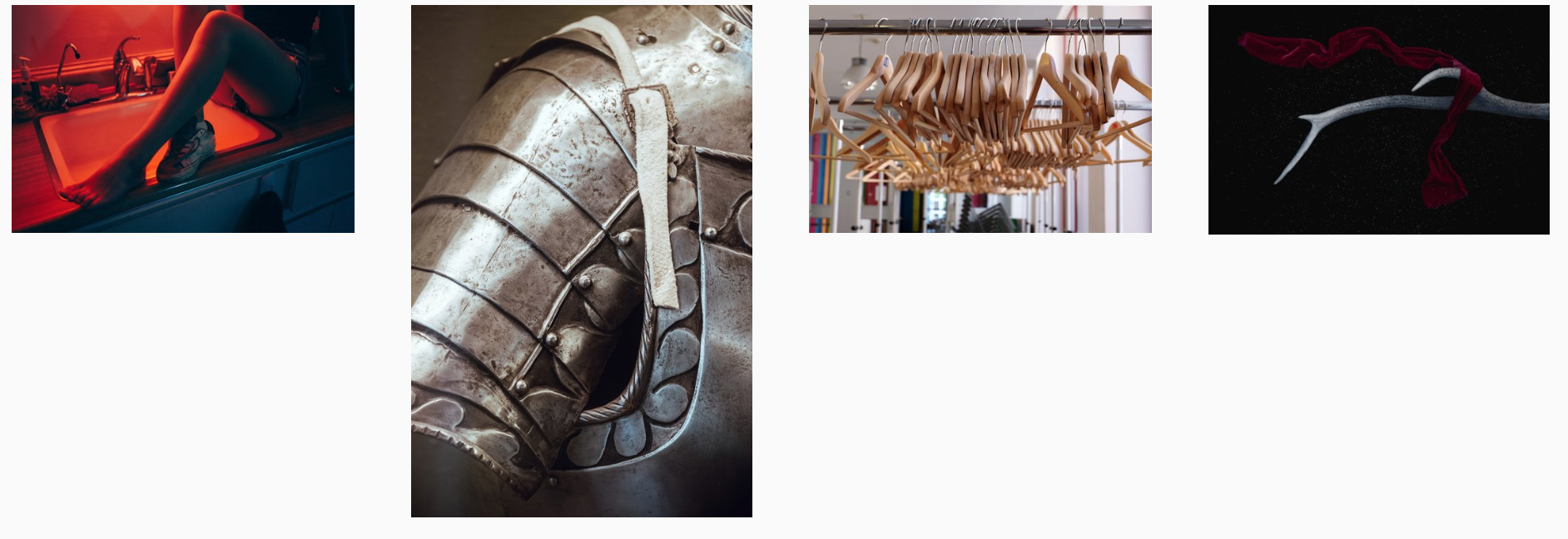DIY image association test
After did some experiment with the IAT last time - I was inspired to make my own association test.
My test is not sophisticated as the Harvard one, but I come up with the idea of mixing it up with the Tinder-style swiping UI.
Many dating apps like Tinder is using left-right swiping UIs. I don't know their reasoning behind the correlation between the direction of swiping and the users' favor of the date match or the object, there are some researchers about the how eye gaze direction is related to inhabited behavior, or subconscious desires. The Whites of Your Eyes Convey Subconscious Truths
So what I did is 0. scrape the random images from image websites, 1. make a tinder-like test using those images 2. record the test result and analyze them.
0. scrape the images
I scraped the download urls from upsplash.com


1. Make an Image Association Test
referenced Swing by gajus
2. Get data from the test
SpreadSheet link


What I collected are 0. order 1. throwing in/out (You cannot swipe the card till you drag the image more than certain pixels, and it would be recorded as throw-in if the distance is not far enough. I analyzed that as a sign of hesitation.) 2. the image URL 3. swipe direction 4. time consumed during swiping (also related to hesitation). I asked Phil to participate the test for comparison.
RESULTS
0. I hesitated 5 times more than Phil.
1. I decided much faster than Phil (90.65 millisecond: 465.43 milliseconds per an image) - I guess this is because I am much familiar with this test.
2. Phil has a much clear preference towards images. I liked 34 images out of 55 whereas Phil only liked 15 images out of 55.
3. I hesitated for the images that I do not like (3 times. like: 2 times), Phil hesitated for the image he likes. (just once)
4. I hesitated when I make a quick decision. All of 5 in's were made within 64 milliseconds.(average 90.65 millisecs)In the case of Phil, his hesitation was made relatively slower than me. .(365 millisecs, average 465.43 millisecs)
5. Phil made quicker decisions for the images that he does not like. 9 out of 10 quickest decisions were for left direction, whereas my quickest 10 decisions were divided by just half.
6. I intentionally made some images poped again to see how the users react when they see the images they have already decided.
In my case, I have never changed the decision about the image, and for the most of the time, I took slightly more milliseconds when I see the images again. That means I hesitate like 10 milliseconds if I see the same images again, but I do not change my decision. (the time difference is almost ignorable.) In case of Phil, even though I did not change his decisions, but it took much shorter time when he makes decisions again. In some of the cases, he spent only the third of milliseconds to make the same decision again. This may means a thing - that showing the same dates again in date apps is not meaningful. (There is no second chance?)
7. Lastly, I can make a spectrum of my image preference by aligning them with the time and direction. The images below are 'fastest left'-'slowest left'-slowest right'-'fastest right' images.

The most left and rightest images are totally different and showing my preferred image style, but the images between is pretty vague and even looks similar to each other.
Here's Phil's image preference spectrum.

I think I could make a preference analyzing system with this. Tracing the user's most and least favored image styles and I can use it to get rid of vague images or for some curation.
Here's the link for the IAT test that I made above.